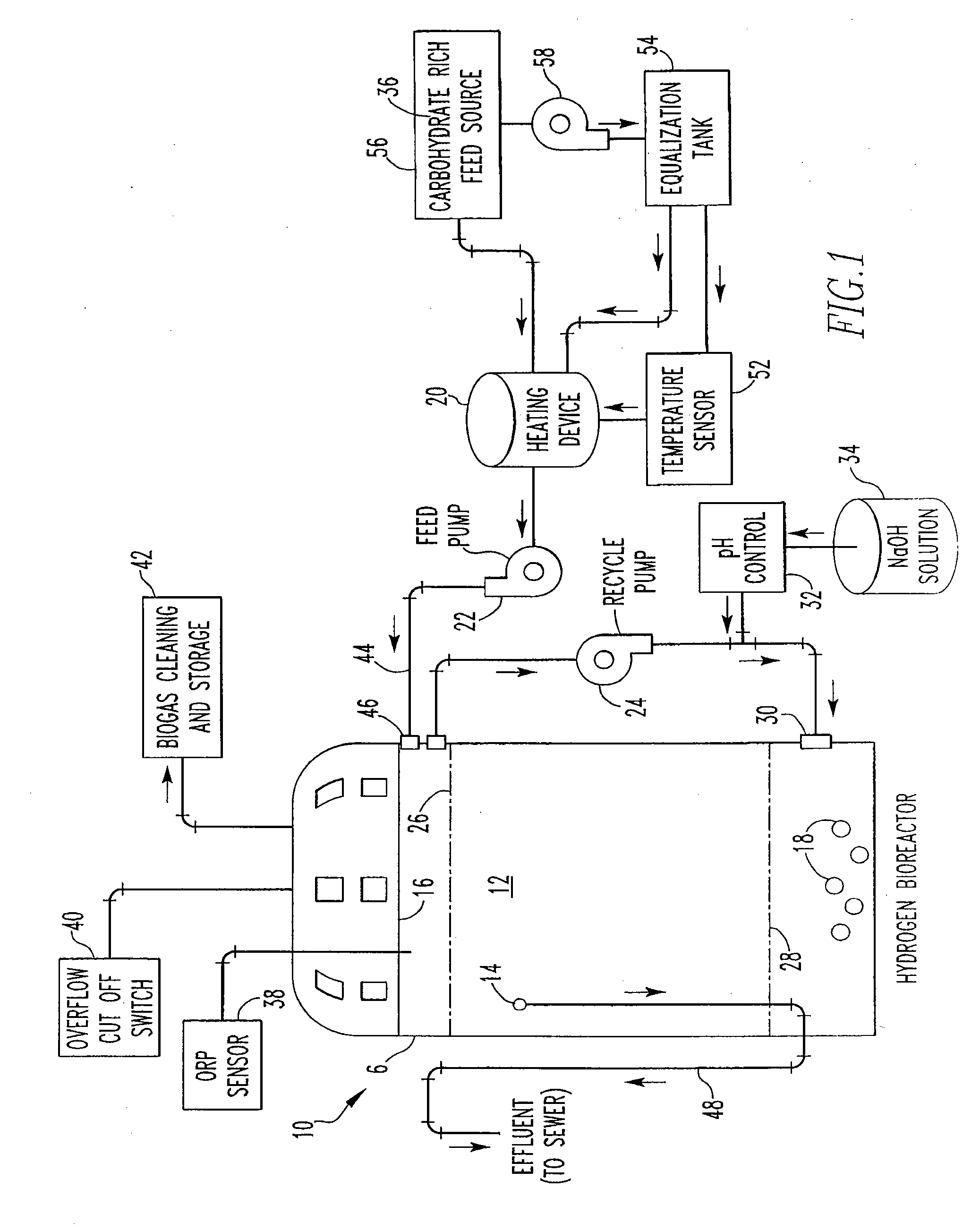Sustained microbial production of hydrogen gas from diluted fruit juice
a technology of hydrogen gas and microorganisms, which is applied in the direction of gas production bioreactors, bioreactors/fermenters, biomass after-treatment, etc., can solve the problems of high energy consumption of fossil fuels, substantial and useful hydrogen gas production from microorganisms, and difficulty in sustained production of useful quantities of hydrogen by microorganisms
- Summary
- Abstract
- Description
- Claims
- Application Information
AI Technical Summary
Benefits of technology
Problems solved by technology
Method used
Image
Examples
example 1
[0047]A multiplicity of bioreactors initially were operated at pH 4.0 and a flow rate of 2.5 mL min−1, resulting in a hydraulic retention time (HRT) of about 13 h (0.55 d). This is equivalent to a dilution rate of 1.8 d−1. After one week, all six bioreactors were at pH 4.0, the ORP ranged from −300 to −450 mV, total gas production averaged 1.6 L d−1 and hydrogen production averaged 0.8 L d−1. The mean chemical oxygen demand (COD) of the organic feed material during this period was 4,000 mg L−1 and the mean effluent COD was 2,800 mg L−1, for a reduction of 30%. After one week, the pHs of certain bioreactors were increased by one half unit per day until the six bioreactors were established at different pH levels ranging from 4.0 to 6.5. Over the next three weeks at the new pH settings, samples were collected and analyzed each weekday. It was found that the optimum for gas production in this embodiment was pH 5.0 at 1.48 L hydrogen d−1) (Table 2). This was equivalent to about 0.75 volu...
PUM
| Property | Measurement | Unit |
|---|---|---|
| temperature | aaaaa | aaaaa |
| volume | aaaaa | aaaaa |
| temperature | aaaaa | aaaaa |
Abstract
Description
Claims
Application Information
 Login to View More
Login to View More - R&D
- Intellectual Property
- Life Sciences
- Materials
- Tech Scout
- Unparalleled Data Quality
- Higher Quality Content
- 60% Fewer Hallucinations
Browse by: Latest US Patents, China's latest patents, Technical Efficacy Thesaurus, Application Domain, Technology Topic, Popular Technical Reports.
© 2025 PatSnap. All rights reserved.Legal|Privacy policy|Modern Slavery Act Transparency Statement|Sitemap|About US| Contact US: help@patsnap.com

